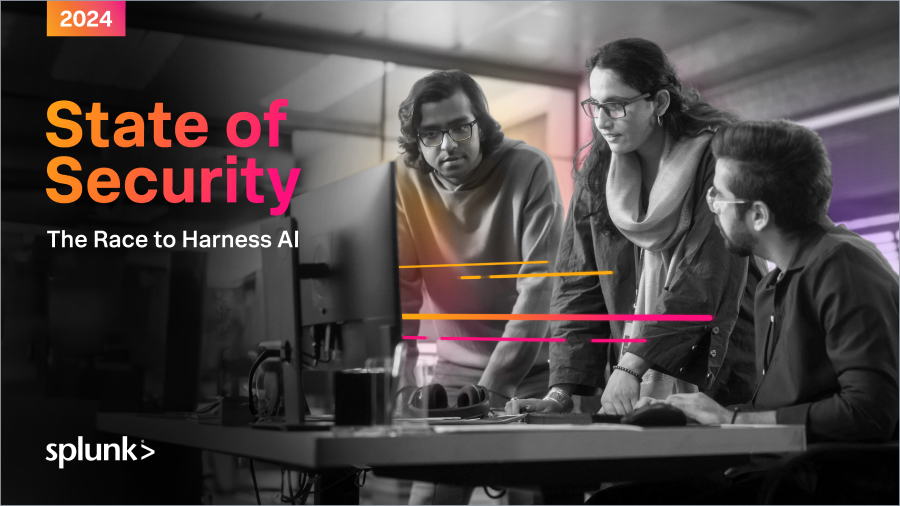Splunk at Black Hat 2024: Strategic Transformations to Power the SOC of the Future

In the face of an increasingly complex and ever-evolving threat landscape, security teams must consider strategic transformations to their security operations to stay ahead. Threats are becoming more sophisticated, frequent and diverse, requiring a proactive and adaptive approach to security. Traditional security operations with siloed processes and reactive measures are no longer sufficient to address the dynamic nature of modern attacks. Security teams must evolve with 3 key strategic transformations to unify technologies and workflows and foster greater collaboration within SecOps: embrace federated data, adopt TDIR, and take full advantage of AI and automation. This evolution is crucial for enhancing threat detection, investigation and response to power the SOC of the future.
 Embrace a Federated Data Strategy
Embrace a Federated Data Strategy
At Splunk, we believe that security is a data problem. Most security challenges involve finding and surfacing actionable data at the right time. With the rise in data volume, variety and complexity, security teams need a solution that supports complex data management, including data routing, filtering, masking and more.
Federated data management is an approach that allows for the integration and management of data from disparate sources without the need to physically move the data into a central repository. The growing importance of federated data management is driven by the need for businesses to gain comprehensive insights from diverse data sources. With the proliferation of cloud services, IoT devices, and global operations, data is scattered across various locations and platforms. Federation enables organizations to harness the full potential of their data by providing real-time alerting and analysis capabilities using federated analytics, regardless of where the data resides.
A security analyst investigating a threat should not only be able to access data stored on different data storage systems using federated search, but they shouldn’t even need to know where the data is coming from. To build the SOC of the future, security teams need a seamless solution that utilizes federated data to ensure comprehensive visibility and streamlined operations for faster and more accurate identification and mitigation of threats.
Unify Security Operations via a TDIR Platform
The proliferation of tools and the complexities of workflows often create silos that hinder effective security operations. A cohesive platform for threat detection, investigation, and response (TDIR) is fundamental to the SOC of the future and overcoming these challenges.
SOCs need a platform approach that seamlessly integrates many tools and technologies into a simple-to-use solution. This platform approach enables security teams to coordinate and collaborate across the entire TDIR lifecycle, and the integrated solution should support real-time data sharing and analysis, enhance visibility across the security landscape, and ensure team members are aligned and informed throughout the entire process. By unifying various security functionalities into a single interface, teams can reduce the complexity of managing disparate systems, improve detection accuracy to detect even the most sophisticated attacks, simplify the processes of investigating and responding to incidents and ultimately reduce the risk of successful breaches.
Take Full Advantage of AI and Automation
AI and automation are the force multipliers that enable security teams to efficiently manage and analyze vast amounts of data in real-time, identifying patterns and anomalies that human analysts might miss.
AI technology, particularly generative AI, can support security analysts by guiding them through threat investigations,writing investigation summaries, and quickly upskilling new analysts on complex security tools. Although AI assistants are unlikely to replace the deep expertise of experienced incident responders anytime soon, their ability to greatly improve the effectiveness and morale of overwhelmed security analysis is undeniable.
Automation leveraging predefined playbooks that seamlessly integrate various tools offers deeper insights into organizational networks, clouds, endpoints, and user activities. Fully embracing automation enhances efficiency and accuracy, minimizes errors and ensures consistent SOC processes. By automating tasks such as alert validation, contextual data collection, and threat analysis, SOC teams can achieve significant time savings, enhanced productivity and reduce error rate all while being more uniform and consistent.
With AI and automation, teams can build a more resilient, proactive and efficient SOC capable of staying ahead of ever-evolving threats.
Join Us at Black Hat 2024
Splunk is committed to driving the evolution of the SOC. At Black Hat 2024, Splunk will demonstrate how we’re empowering security teams to embrace these key strategic transformations and navigate the complex threat landscape with agility and confidence. Discover all the ways to connect with Splunk at Black Hat 2024, including:
- AI Summit panel: Integrating AI with Cybersecurity Strategy - Navigating the Next Five Years with Hao Yang, Vice President, Artificial Intelligence at Splunk on Tuesday, August 6th at 1:15pm
- A speaking session on Powering the SOC of the Future with David Dalling, Vice President of Global Security Strategists, on Wednesday, August 7th at 10:55am
- An Arsenal session on Splunk Attack Range from Senior Principal Threat Researcher, Rod Soto
- Demos and presentations in Splunk booth #1940 from security experts and Splunk partners
- SOC Tours from the Splunk SOC Team
- Splunk Welcome Party
- Splunk Partner Party
- OCSF Evening Event
- Stop by the Cisco booth next door to learn about securing your networks, cloud, endpoints and email to protect everything that matters, from anywhere
For more information about Splunk at Black Hat 2024, visit our event page here.
Related Articles
About Splunk
The world’s leading organizations rely on Splunk, a Cisco company, to continuously strengthen digital resilience with our unified security and observability platform, powered by industry-leading AI.
Our customers trust Splunk’s award-winning security and observability solutions to secure and improve the reliability of their complex digital environments, at any scale.




